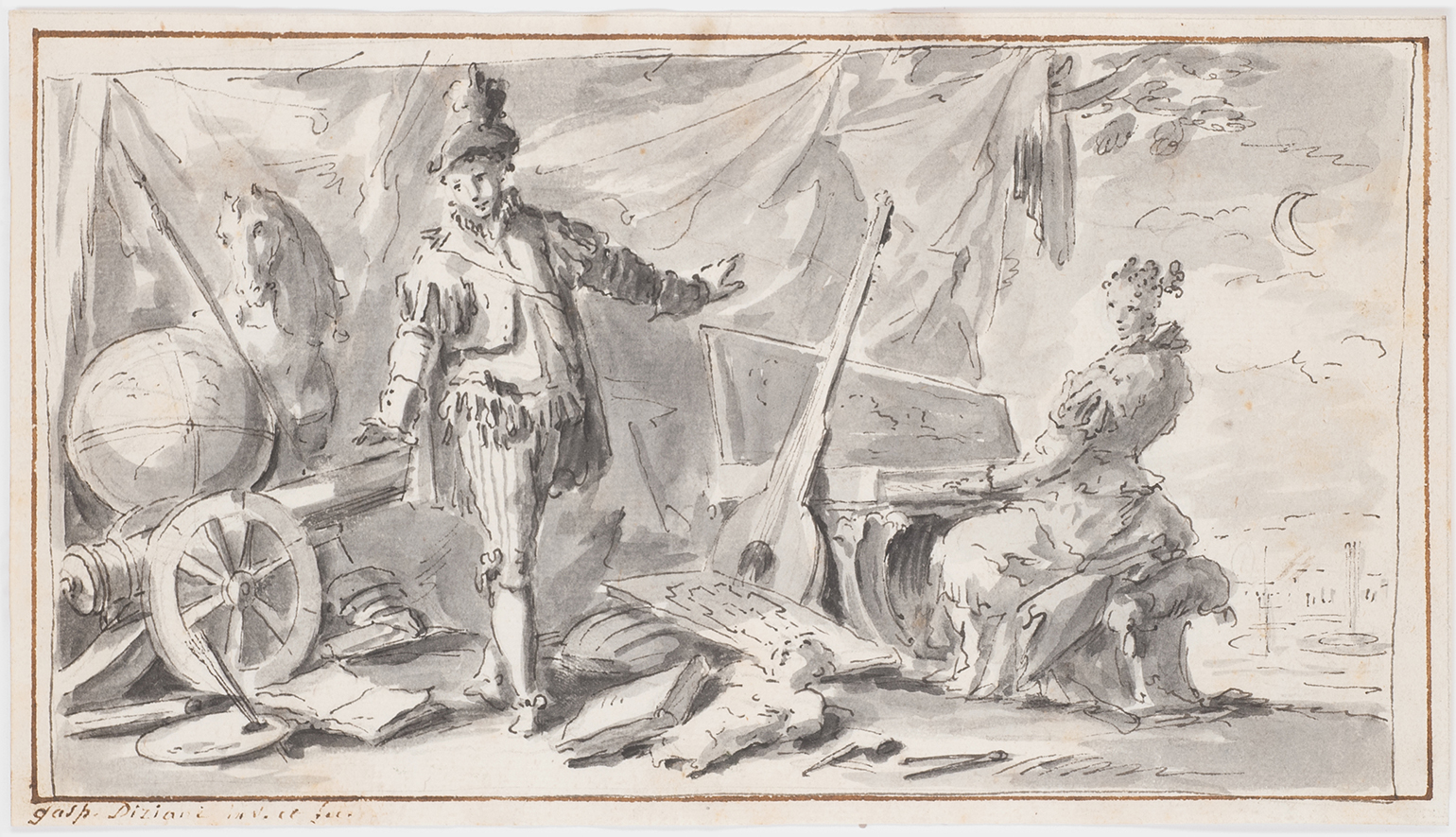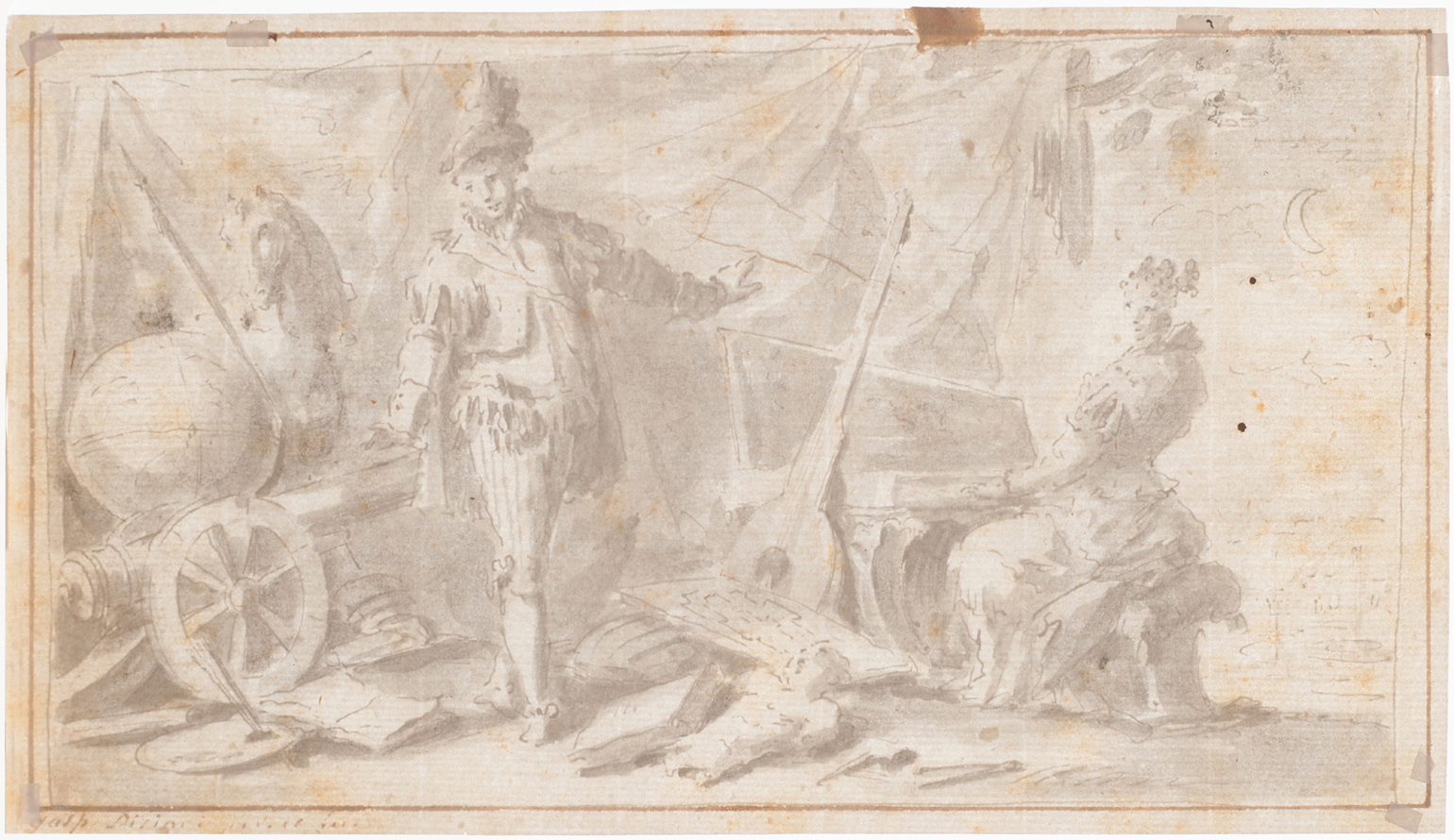Focus on one drawing by Gaspare Diziani

The refined and elegant representation of an attractive theme, by an important Venetian rococo painter.
Focus on a drawing from our December carton. Find this drawing by Gaspare Diziani in the drawings-online gallery.


Gaspare DIZIANI
Belluno 1689 – Venice 1767
An Allegory of Artes Liberales and Artes Mechanicaes
Signed gasp. Diziani inv. et fecit lower left.
Pen and black ink, grey wash, double framing lines with pen and black ink and pen and brown ink.
115 x 204 mm – 4,53 x 8,03 in.
Under the moonlight, a man and a woman are surrounded by various attributes of artes liberales and artes mechanicaes. The intellectual and abstract disciplines of the artes liberales – grammar, dialectic, rhetoric, geometry, arithmetic, astronomy, and music – are synthetized by the books, the compass, the musical instruments and the globe. Artes mechanicaes, useful and technical skills such as painting, architecture, sculpture, but also agriculture and war, are represented by the painter’s palette, the sculpted bust, the architectural plans, the canon and the horse. By reviving this concept of art division which was theorized during the Middle-Age, the artist does not seek to display an extensive list of each attribute of both categories, but tries to unify them into a single vision of human genius. Thus, this elegant allegory – seemingly frivolous and decorative – expresses the universal and inclusive perception of the arts which was central to the European Enlightenment and which was finally clearly enunciated in the Encyclopaedia published by Diderot and d’Alembert.
A pupil of Gregorio Lazzarini and Sebastiano Ricci, Gaspare Diziani is a major figure of Venetian Rococo. Except for a stay in Dresden and Munich, during which he worked as a scenery painter with Alessandro Mauro, and a stay in Rome under the patronage of Cardinal Ottoboni, the main part of his career took place in Venice. Diziani produced numerous religious decors, such as his Entry of the Christ into Jerusalem for the church of San Teodoro but was also very much sought after for the light and playful decors that he painted in many private rooms in Venetian palazzi. He was one of the founders of the Accademia di Belle Arti in Venice and was a prolific draughtsman.